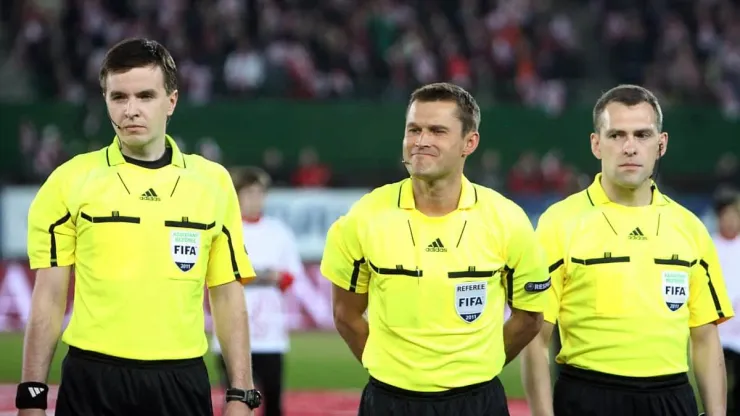Soccer’s rules seem fairly straightforward, right?
Kick the ball into the opponent’s net. Prevent the opponent from kicking the ball into your net. Do not use your hands. Throw-ins and corner-kicks when the ball goes out of bounds.
However, there are those other rules that can stump all fans.
The offside rule. The back-pass rule. Direct and indirect free-kicks. Stoppage time.
We have all been in conversations trying to explain all these peculiar rules to blank faces from our friends or family members. In addition to that, we debate fellow soccer fans regarding things like VAR, embellishment or handballs.
Since its inception in the 19th century, soccer’s rules changed periodically to create the game we love today. Here are some rules that leave us questioning certain decisions by the referee or wondering why things happen in a certain way.
Soccer’s rules and the penalty box
Not all infringements inside the penalty box result in penalty kicks.
For example, the back-pass rule leads to an indirect free kick inside the area. As a relatively new addition to soccer’s rules, established in 1992, the back-pass rule served as a way to eliminate time-wasting strategies. Also, the rule requires goalkeepers to be better suited with their feet than previous generations.
This rule prohibits the goalkeeper from handling a ball that has been deliberately kicked to him by a teammate. If the goalkeeper does handle the point, an indirect free-kick is awarded in the penalty area rather than a penalty kick.
Defenders and attackers remain outside the 18-yard box during a penalty kick.
The free-kick is taken from the spot where the ball was handled, unless the goalkeeper handled it within his/her six-yard box. In this case, the free kick is taken from the point on the six-yard line closest to the infringement. Therefore, we see two uses of the six-yard box. On one hand, it is the farthest distance allowed to place the ball on a goal kick. On the other, it is the holding point for an indirect free kick.
We also all notice the D shape on the 18-yard box. The reason for that is penalty kicks. During a spot kick, defenders and attackers (apart from the one taking the kick) should be at least 10 yards away from the penalty spot.
The circular outer line of the D is exactly 10 yards from the penalty kick. No player is allowed to occupy this D during a penalty kick apart from the penalty taker.
Soccer’s rules always get quirky as play approaches the penalty box, just as they do in the offensive half.
The offside rule
When you ask a casual fan about soccer’s rules, they often say the only one they struggle with is the offside rule.
At its core, the rule implies that no attacker can be behind the opposition’s defensive line at the time a pass or shot is played. Unsurprisingly, there are slight implications that occur in reality.
For one, the offside rule does not apply during a throw-in. Moreover, the offside rule actually only applies in the opposition half. If the defense finds themselves in the opposition’s half, the halfway line becomes the offside line.
READ MORE: Beginner’s guides to soccer leagues from around the world.
The rules state that for an attacker to be in an offside position, they must be closer to the opponents’ goal line than “both the ball and the second-last opponent” (taken from Law 11 of FIFA’s laws of the game). This means that it is not simply the last defender, as is commonly believed.
If the goalkeeper is caught outside his/her goal and the attacker receiving the ball just has one opposing outfield opponent ahead of him, then they are offside.
This is a rare occurrence, but it happened in a significant game in 2013. In a UEFA Champions League quarterfinal between Málaga and Borussia Dortmund, the winning goal should not have counted. Felipe Santana’s stoppage-time winner should have been ruled offside. Santana found himself past the goalie with just one Málaga defender in front of him as he bundled the ball in.
Current modifications like VAR would prevent something like that in the modern game. However, soccer’s rules benefitted Dortmund that day, helping them reach the Champions League Final.
200+ Channels With Sports & News
- Starting price: $33/mo. for fubo Latino Package
- Watch Premier League, Women’s World Cup, Euro 2024 & Gold Cup
The New Home of MLS
- Price: $14.99/mo. for MLS Season Pass
- Watch every MLS game including playoffs & Leagues Cup
Many Sports & ESPN Originals
- Price: $10.99/mo. (or get ESPN+, Hulu & Disney+ for $14.99/mo.)
- Features Bundesliga, LaLiga, Championship, & FA Cup
2,000+ soccer games per year
- Price: $5.99/mo
- Features Champions League, Serie A, Europa League & Brasileirāo
175 Premier League Games & PL TV
- Starting price: $5.99/mo. for Peacock Premium
- Watch 175 exclusive EPL games per season






